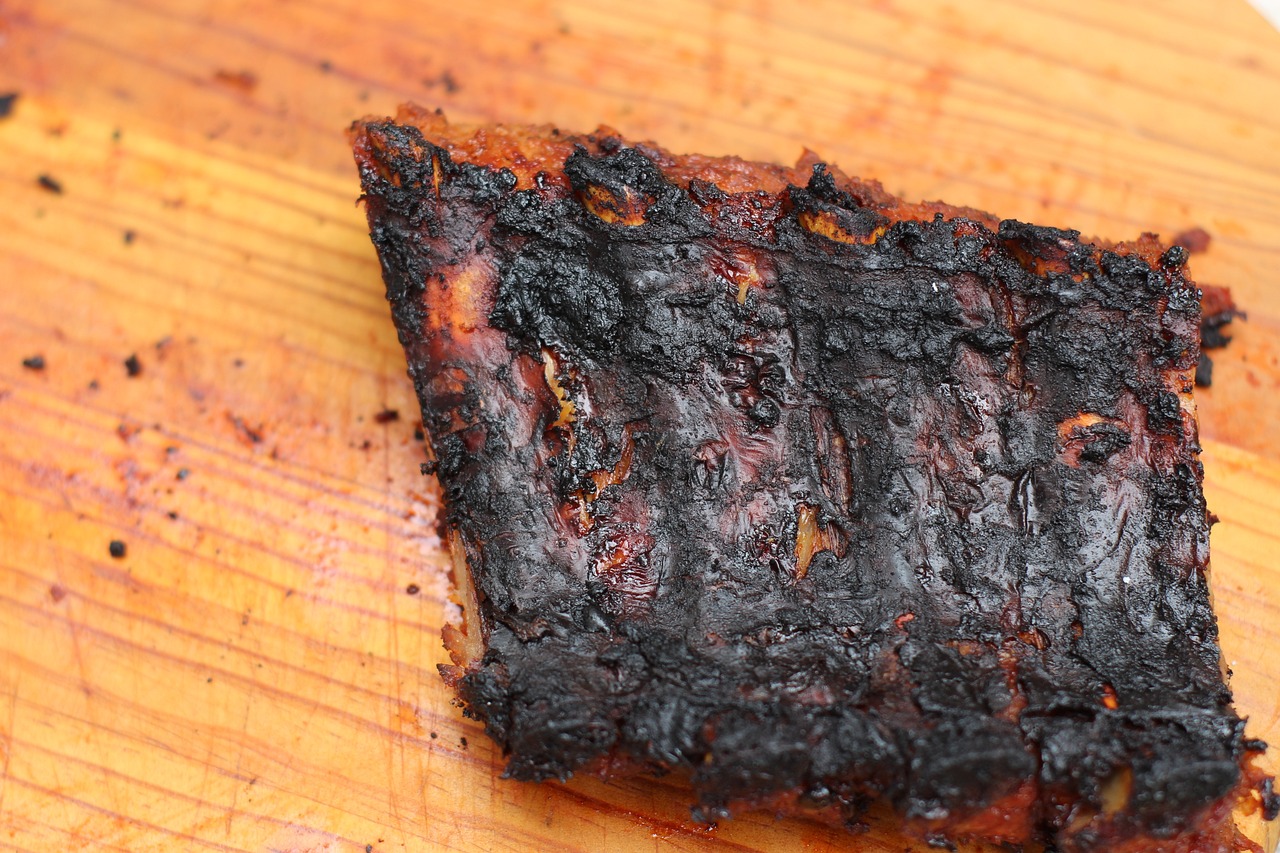10 Engaging Reasons Why You Are Craving Burnt Food

When it comes to food preferences, there’s a wide range of tastes and cravings that people experience, and one of the more peculiar ones is the craving for burnt food. While it might seem unusual to some, there’s a variety of reasons why someone might find themselves drawn to the charred flavors of overcooked meals. From psychological factors to nutritional benefits, let’s explore the reasons behind this unique craving.
Why Am I Craving Burnt Food?
1. Acquired Taste
For many, the craving for burnt food is an acquired taste, developed over time through repeated exposure. This can often be traced back to childhood experiences where burnt meals were a common occurrence, either due to cooking preferences of a caregiver or simply frequent kitchen mishaps. Over time, these flavors become associated with comfort and nostalgia.
Furthermore, the distinct taste of burnt food can also offer a unique sensory experience. The bitter and smoky flavors, which are absent in properly cooked meals, can become desirable for those looking for a change from the ordinary. This quest for a unique taste sensation can lead some to prefer their food on the charred side.
2. The Maillard Reaction
The Maillard reaction plays a crucial role in why some people crave burnt food. This chemical reaction between amino acids and reducing sugars gives browned food its distinctive flavor. While the ideal Maillard reaction doesn’t necessarily mean burnt, the fine line between well-browned and slightly charred can sometimes blur, leading to a preference for the latter.
Burnt food offers a complexity of flavor that can’t be found in its non-burnt counterparts. The reaction creates hundreds of different flavor compounds, some of which are only produced through overcooking. This complexity is what some palates find irresistible, leading to a preference for the burnt over the perfectly cooked.
3. Texture Contrast
The texture of burnt food is another reason behind the craving. The crunch and crispiness of charred surfaces provide a pleasing contrast to the softer, sometimes monotonous textures of regular cooked food. This contrast can enhance the eating experience, making the food more enjoyable to consume.
Additionally, the crispy texture of burnt food can be psychologically satisfying. The act of crunching on something hard and crispy is often associated with freshness and quality, even if, in this case, it’s the result of being overcooked. This texture can also stimulate the senses in a way that softer foods cannot, making it a sought-after experience for some.
4. Psychological Factors
There’s a psychological aspect to craving burnt food as well. For some, the act of eating something that’s not ‘perfectly’ cooked can be a form of rebellion against conventional culinary norms. It becomes a way to assert individuality and personal taste preferences.
Moreover, the craving for burnt food can sometimes be linked to stress or emotional eating. Just as some people crave sweets or salty snacks when feeling stressed, others might find comfort in the distinct taste and texture of burnt food. It’s a reminder of the complexity behind our food choices and how they can be influenced by our mental and emotional states.
5. Nutritional Aspects
Surprisingly, there might be some nutritional aspects to craving burnt food. Although overcooking can lead to the loss of certain nutrients, it can also make others more bioavailable. For instance, the process of charring can break down fiber, making it easier to digest and potentially allowing the body to access nutrients more readily.
However, it’s important to note that eating burnt food can also pose health risks, such as exposure to carcinogenic compounds. Therefore, while there might be some nutritional changes that come with burnt food, it’s crucial to balance these with the potential health implications.
6. The Thrill of Risk
For some, the appeal of burnt food is tied to the thrill of risk. Consuming something that society generally deems as overcooked or even potentially harmful can be exhilarating. It’s a culinary adventure that defies the norm, providing a sense of excitement and novelty.
This thrill can be likened to the enjoyment some find in extreme sports or adventurous activities. Just as the risk associated with these activities can heighten the experience, so too can the perceived risk of eating burnt food enhance the enjoyment for some individuals.
7. The Influence of Culture
Cultural influences can also play a significant role in the craving for burnt food. In some cultures, charred or heavily grilled foods are a staple, appreciated for their distinct flavors. For individuals raised in these environments, the preference for burnt food is not just a personal quirk but a reflection of cultural culinary traditions.
Moreover, the communal aspect of cooking food over an open flame or barbecue can add to the appeal of burnt food. The social experience of gathering around a grill, along with the associated flavors of charred food, can create lasting positive associations and cravings.
8. Seeking Variety in Diet
The craving for burnt food can also stem from a desire for variety in one’s diet. Eating the same types of flavors and textures can become monotonous, leading some to seek out more unusual tastes. Burnt food offers a break from the norm, providing new sensory experiences that can rejuvenate one’s interest in eating.
This search for variety is a natural part of human culinary exploration. Just as people seek out new restaurants or cuisines, so too might they find themselves intrigued by the unique taste profile of burnt food.
9. Association with Outdoor Cooking
The association with outdoor cooking and barbecue can also trigger cravings for burnt food. The smoky flavor of charred meat or vegetables is often linked to memories of camping, picnics, and outdoor gatherings. These positive associations can make the taste of burnt food particularly appealing.
Outdoor cooking often involves grilling, which naturally lends itself to charring and burning. The unique flavors produced by this cooking method are hard to replicate with indoor cooking techniques, making them all the more desirable for those who have developed a taste for them.
10. The Role of Smell
Finally, the role of smell cannot be underestimated when it comes to craving burnt food. The aroma of food being grilled or charred can be incredibly enticing, triggering memories and associations that lead to cravings. The smell of burnt food can evoke a sense of comfort and homeliness for some, making it a sought-after experience.
Moreover, the olfactory experience of burnt food is unique and can stimulate the appetite. The complex blend of smoky, charred aromas has the power to make the mouth water, driving the craving for the taste that accompanies these smells.
In conclusion, the craving for burnt food is a multifaceted phenomenon, influenced by a blend of psychological, cultural, nutritional, and sensory factors. While it might not be everyone’s preference, for those who do crave it, burnt food offers a unique and satisfying culinary experience that stands out from the ordinary.





